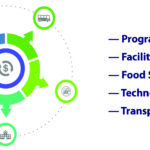The Division of Administrative Law desired to charge state agency customers for the services it provides as a newly formed internal service fund. To ensure their billings would be considered allowable costs to any federal programs supported, the Division needed to establish a billing methodology consistent with the federal costing requirements of 2 CFR Part 200. The Division was experiencing problems with customers not having the ability to pay for services in excess of the amount. The Division also desired the ability to maintain the billing methodology with its own staff in future years, and to educate its customer agencies about the billing methodology and procedures.
MGT interviewed organization staff and gathered financial and operational information for the Division to gain a full understanding of their service offerings. Using the information gathered, MGT developed a billing methodology and cost allocation model consistent with the federal costing requirements of 2 CFR Part 200 that determines billing rates and projections of costs by service and by customer. To address the issue of customer payment issues due to unplanned increases in service where budgetary authority didn’t exist, MGT developed a fixed billing process whereby customer agencies knew their annual bill in advance, and any true-ups to actual cost were handled through adjustments in future years’ billings. MGT provided training to Division of Administrative Law staff on the use and implementation of the methodology, as well as providing training to the customer agencies to ensure they fully understood how their bills for service were being calculated.
The billing methodology developed by MGT was successfully implemented by the Division of Administrative Law and approved by the U.S. Department of Health & Human Services, Cost Allocation Services Division as part of the State’s annual Statewide Cost Allocation Plan. The Division of Administrative Law staff was able to successfully update the billing rates in future years, and their client satisfaction was increased due to the transparency of the rate determination process.










